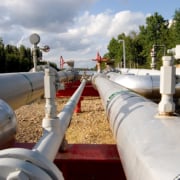EPA Proposes Change to Treatment of Fugitive Emissions in New Source Review
On October 13, 2022, the U.S. Environmental Protection Agency (EPA) released a proposed rule changing the treatment of fugitive emissions in determining whether a modification is major under the New Source Review (NSR) provisions of the Clean Air Act. The proposed rule — which modifies NSR regulations that have been stayed since 2009 — would require all major sources to consider fugitive emissions when determining whether a proposed change would constitute a major modification. Regulated entities considering changes to their existing facilities should monitor the progress of this rule and consider commenting.
By way of background, EPA defines “fugitive emissions” as “emissions which could not reasonably pass through a stack, chimney, vent, or other functionally equivalent opening.” In the preamble to the proposed rule, EPA notes that windblown dust from surface mines and emissions leaking from pipes could be fugitive emissions. Fugitive emissions play a role in NSR determinations for both new construction and proposed changes to existing facilities. Where quantifiable emissions exceed certain thresholds, a major NSR permit may be required, increasing complexity, cost, and regulatory burden.
EPA’s proposed rule seeks to end decades of uncertainty about the treatment of fugitive emissions in NSR. EPA first promulgated rules regarding the treatment of fugitive emissions in 1978. The fugitive emissions have been subject to rule amendments and reversals, interpretation, and court action throughout the past four-plus decades. Most recently, in 2008, EPA issued regulations that would have required only major sources in specified categories to consider fugitive emissions in determining whether a proposed change would constitute a major modification and allowed facilities that exceeded the threshold only because of fugitive emissions to avoid major-modification classification. But those regulations have been stayed since 2009 as a result of legal challenges.
Seeking to put an end to the back and forth, EPA’s new proposed rule would require all major sources to consider fugitive emissions when determining whether a proposed change would constitute a major modification. Moreover, EPA’s new rule would eliminate the exception for circumstances where a change constitutes a major modification only because of fugitive emissions. EPA’s new rule would not change how fugitive air emissions are considered in determining whether a new or existing source is a major source.
This post is as of the posting date stated above. Sidley Austin LLP assumes no duty to update this post or post about any subsequent developments having a bearing on this post.


